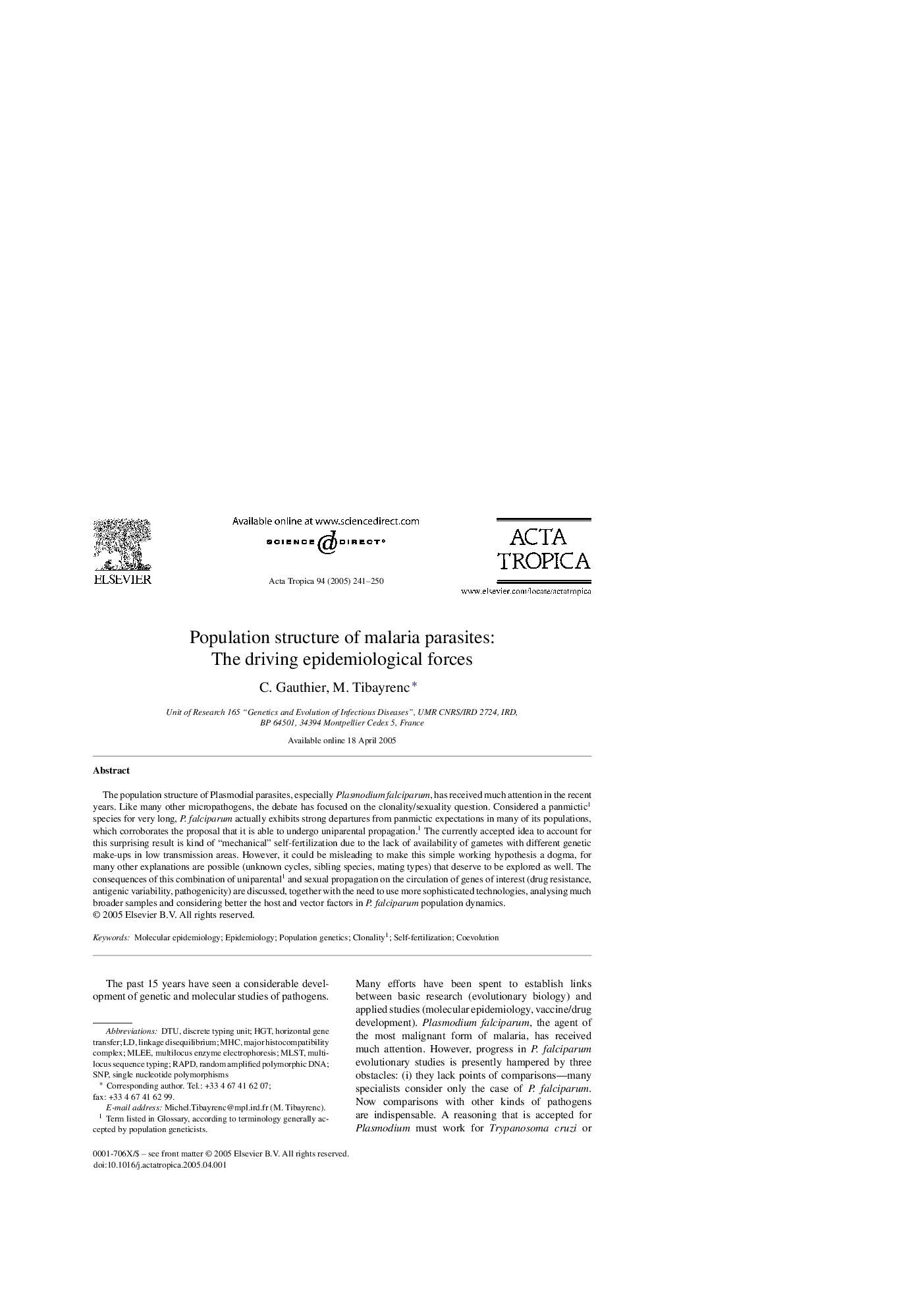| کد مقاله | کد نشریه | سال انتشار | مقاله انگلیسی | نسخه تمام متن |
|---|---|---|---|---|
| 9274307 | 1221498 | 2005 | 10 صفحه PDF | دانلود رایگان |
عنوان انگلیسی مقاله ISI
Population structure of malaria parasites: The driving epidemiological forces
دانلود مقاله + سفارش ترجمه
دانلود مقاله ISI انگلیسی
رایگان برای ایرانیان
کلمات کلیدی
DTUHGTRAPDMLSTCoevolutionRandom amplified polymorphic DNA - DNA پلیمورفیک تقویت تصادفیMultilocus enzyme electrophoresis - الکتروفورز آنزیم MultilocusHorizontal gene transfer - انتقال ژن افقیMolecular epidemiology - اپیدمیولوژی مولکولیEpidemiology - اپیدمیولوژی(همهگیرشناسی)Multilocus sequence typing - تایپ چند ضلعی توالیMLEE - خلق کنیدSelf-fertilization - خود باروریLinkage disequilibrium - عدم تعادل پیوستگیmajor histocompatibility complex - مجموعه سازگاری بافتی اصلیMHC - مجموعه سازگاری بافتی اصلیDiscrete typing unit - واحد تایپ دیجیتالیSingle nucleotide polymorphisms - پلیمورفیسم تک نوکلئوتیدیSNP - چندریختی تک-نوکلئوتیدPopulation genetics - ژنتیک جمعیت
موضوعات مرتبط
علوم زیستی و بیوفناوری
ایمنی شناسی و میکروب شناسی
انگل شناسی
پیش نمایش صفحه اول مقاله

چکیده انگلیسی
The population structure of Plasmodial parasites, especially Plasmodium falciparum, has received much attention in the recent years. Like many other micropathogens, the debate has focused on the clonality/sexuality question. Considered a panmictic1 species for very long, P. falciparum actually exhibits strong departures from panmictic expectations in many of its populations, which corroborates the proposal that it is able to undergo uniparental propagation.1 The currently accepted idea to account for this surprising result is kind of “mechanical” self-fertilization due to the lack of availability of gametes with different genetic make-ups in low transmission areas. However, it could be misleading to make this simple working hypothesis a dogma, for many other explanations are possible (unknown cycles, sibling species, mating types) that deserve to be explored as well. The consequences of this combination of uniparental1 and sexual propagation on the circulation of genes of interest (drug resistance, antigenic variability, pathogenicity) are discussed, together with the need to use more sophisticated technologies, analysing much broader samples and considering better the host and vector factors in P. falciparum population dynamics.
ناشر
Database: Elsevier - ScienceDirect (ساینس دایرکت)
Journal: Acta Tropica - Volume 94, Issue 3, June 2005, Pages 241-250
Journal: Acta Tropica - Volume 94, Issue 3, June 2005, Pages 241-250
نویسندگان
C. Gauthier, M. Tibayrenc,